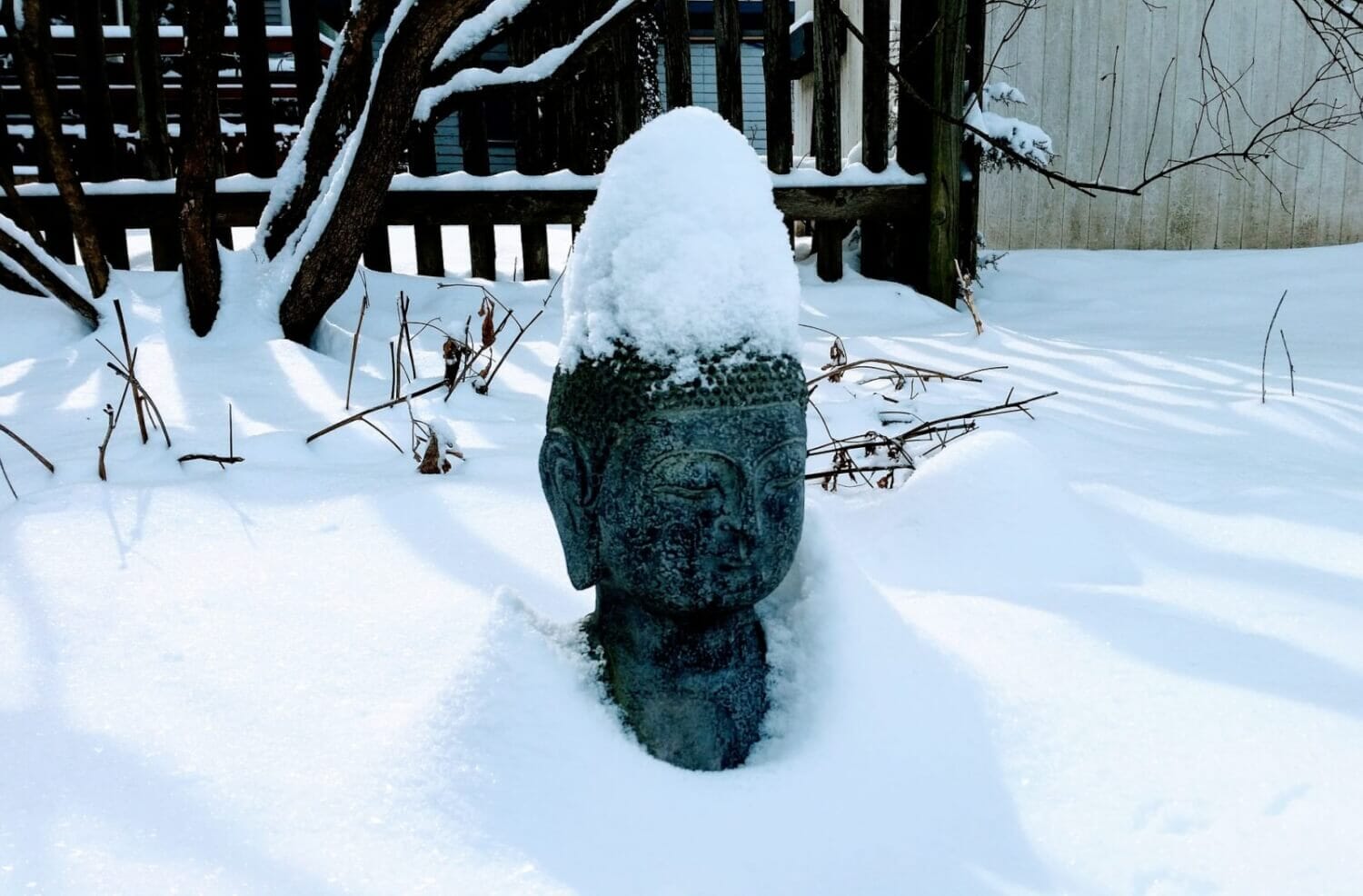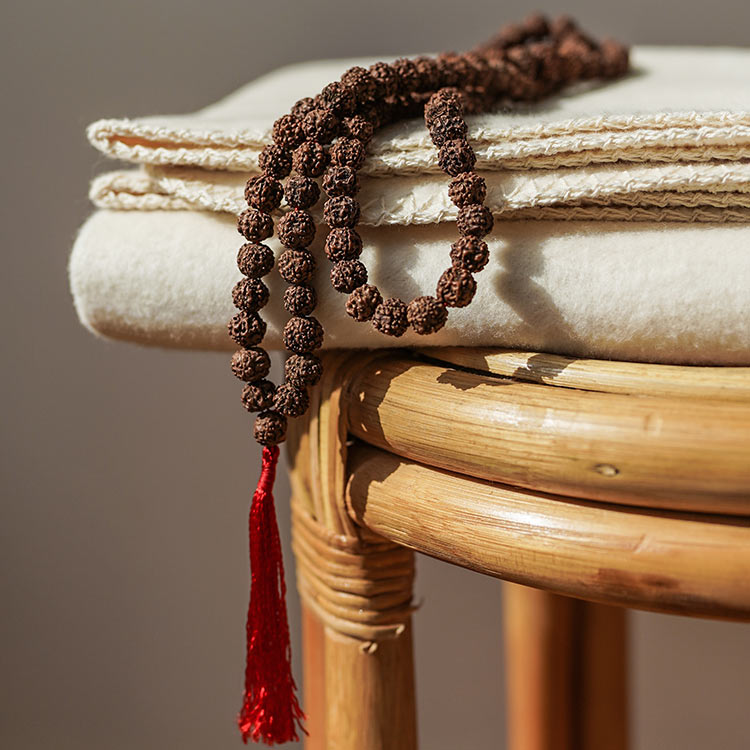
Why yoga is especially important in winter – Your guide
Few people look forward to the cold season: In this country, winter is characterized by temperatures around zero, little sunshine, and lots of darkness. It's not uncommon for people to become bad-tempered and depressive moods to increase. This is primarily due to a lack of vitamin D3, which is produced by sunlight. Therefore, it's important that everyone organizes their daily routine during the cold season so that they feel better and can enjoy life. Wrapping up warm helps to protect your body from the sub-zero temperatures. You can find inner warmth by consciously taking time for yourself: meditation and yoga exercises on the mat are particularly beneficial.

Why is yoga good in winter?
Whether it's summer, spring, fall, or winter – exercise, fitness, and a healthy, nutrient-rich diet are essential for staying healthy. The exercises from Buddhist teachings can help you achieve this.
a) Good against colds
Of course, yoga on the mat won't cure all your aches and pains, but the exercises still have positive effects on the body. If you frequently suffer from colds during the cold season, you should do something good for your immune system. If you practice daily (in a class or at home) and do the right asanas, you can relax your body and reduce the stress hormone cortisol. Ideally, you should change the location and move your yoga practice outdoors. Of course, this is only for hardy people. The cold air strengthens the immune system in a special way and can be helpful in significantly improving your defenses.
Nadi Shodhan: Breathing exercise
Another tip: Combine this with the right breathing exercise. Alternate nostril breathing (Nadi Shodhan), for example, can be very helpful for colds. Sit upright and close your left nostril with the ring finger of your right hand while inhaling through your right nostril. Now close your right nostril and hold your breath for a few counts. Then exhale through your left nostril while closing your right nostril with your right thumb. Repeat this process every cold winter day—when a cold is coming on, but also on other occasions. The more often you do this per week, the more effective the exercise will be.
This brings the following advantages:
- The body is supplied with more oxygen
- Balancing Yin and Yang
- Brings peace to the body
- Can balance a restless mind during winter depression
Beginners should do the exercise slowly, as you may feel slightly dizzy at first.
Useful yoga exercise for colds: Half Candle (Viparita Karani)
For this pose, lie on your back. On your next exhalation, bring your knees toward your chest, and on your inhalation, raise your legs (stretching them straight up in the air). This yoga pose is perfect for your back and head—especially if you have pain there. It also relaxes you.

b) Helpful for negative mood and winter depression
Many people suffer from a negative mood during the cold season. But that doesn't have to be the case. Those who regularly practice yoga or engage in other outdoor activities are doing something good for their health: their minds are strengthened, their energy levels are increased, and their mental strength is strengthened.
After a yoga class in the studio or at home and a cup of tea, most people immediately feel much better and fit again.
Experts emphasize that the combination of lying and sitting yoga exercises is perfect for strengthening one's psyche. Those who also meditate on a comfortable meditation cushion will experience an even greater effect.
The following exercises may be helpful:
- Shoulder Bridge (Setu Bandha Sarvangasana): Lie on your back with your feet hip-width apart on the floor. Rest your arms at your sides. As you inhale, lift your pelvis upward, creating an inclined plane between your shoulders and knees. This exercise affects your neck, chest, and back. You'll feel calmer, stress will decrease, and your mind will relax.
- Downward-Facing Dog (Adho Mukha Svanasana): This pose is probably one of the most well-known. From a quadrupedal position, lift your buttocks upwards and extend your arms and legs. This creates a triangle with your body. Keeping your back straight and legs stretched out is important. For most people, this pose has a calming effect.
Anyone suffering from mild depression should definitely schedule daily walks in nature. The air in parks and forests is very beneficial for the body.

c) Yoga as part of conscious, mindful introspection
The combination of yoga, meditation, and breathing exercises is ideal for getting to know yourself better. Many people are so busy in their daily lives that they don't have time to listen to their own needs. However, those who make the effort to practice a few minutes of asanas, meditation, and breathing exercises every day will notice a dramatic difference in their well-being. Buddhist teachings help strengthen body awareness.
Winter is the perfect time of year to look inward, resolve inner issues, and reconnect with yourself. Those who integrate these three aspects into their daily routine, along with exercise, will feel significantly better both mentally and physically – winter can be seen as an opportunity to practice inner wellness. Asanas provide a valuable service in this regard.
In this context, keeping a gratitude journal and writing down all the emotions that arise is helpful.
d) Increase physical fitness
Of course, the asanas also have a great effect on the body – especially during the darker months, many people tend to stay on the couch and never want to get up. Yoga is a perfect sport that can be practiced year-round. Those who integrate Vinyasa or Ashtanga asanas into their daily routine can significantly improve their physical fitness.
Do you incorporate yoga into your winter exercise and wellness routine?
Share


